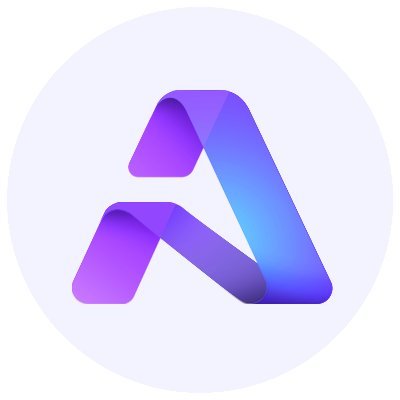AI concept projects IO and ATH launched consecutively, interpreting the underlying business models
Author: 0xTodd, Co-founder of Ebunker
Editor's Note: On June 11, IO opened on the Binance platform, surging to $6.5 this morning. ATH was also listed on major exchanges yesterday, currently reported at $0.0874 at the time of writing. 0xTodd, co-founder of Ebunker, provided an interpretation and comparative analysis of the business models behind the AI concept coins IO and ATH on X, as follows:
Recently, both $IO and $ATH, two AI concept projects, have had their TGE consecutively, so I wanted to share a few thoughts.
Ultimately, this is a very classic business model:
First, let’s discuss a scenario. On the left hand, there are some AI startups and some game rendering companies. I’m talking about startups, not those very mature large companies like OpenAI. On the right hand, there are many people with GPU resources who hope to utilize those idle GPUs, such as 4090, 3090, A100, H100.
AI startups can use these idle GPUs, which can bring profits to those who own the GPUs while being priced lower than traditional quotes. Now, if there is a platform that connects these demands and resources, a classic platform business model is born.
Thus, @ionet and @AethirCloud discovered this market opportunity and prepared to create a platform to "introduce" idle GPUs to AI or rendering companies. This is meaningful because these AI companies may not have the capability to purchase a large number of GPUs on their own.
First, these AI companies do not want to buy a large number of GPUs because the cost is too high. They prefer to rent GPUs flexibly whenever needed. Secondly, GPUs are currently in high demand internationally, and there are even some embargoes. Therefore, many companies are forced to choose some overseas third-party intermediaries for transit, which also brings a lot of costs and gray areas. Hence, a decentralized facility becomes very important, which is also the market demand identified by the IO and Aethir projects.

However, the "chicken or egg" problem still needs to be solved. AI startups are willing to join because they first need to recognize that there are many GPU resources on the platform, and those with GPUs are willing to list on the platform because they first believe there will be many orders.
However, if the platform starts from scratch without many GPUs and companies, it will be very difficult to launch. This is also why these companies or platforms need Crypto, as Crypto can help them break this cycle.
IO chose a "chicken first" approach. It doesn’t matter if there are no orders; token subsidies can help accumulate GPUs first. They launched a ignition plan, and at its peak, hundreds of thousands of GPUs were listed on IO.
This is also the significance of a decentralized computing power platform with a token model. Many people may ask, these tokens can’t just be used for subsidies; do they have any intrinsic meaning or function?
Both IO and Aethir coincidentally chose a conventional and effective approach. Their future platforms will certainly support using fiat or stablecoins as payment, but they also thoughtfully provide options to pay with IO tokens or ATH tokens, which can waive some fees.
I think this is a good choice; it does not force users to use their own tokens while also giving their tokens some functionality. Whether it’s a 2%, 3%, or 5% discount, every bit counts, and this will encourage those who need to pay to indirectly hold these tokens, regardless of whether they will appreciate in the future, which is very beneficial for chip dispersion.
In terms of ecosystem building, IO and Aethir have some differences in their approaches. The Aethir team has taken a different approach because there are many AI classification platforms now, and as far as I know, there may be no less than 20. So how to gain an advantage in competition?
Aethir previously sold a virtual miner called CheckerNode, and later sold Edge miners. This method is very effective in maintaining the community's basic support. Because when many people have some sunk costs with you, they will focus more on this community and are less likely to leave.
Whether purchasing the virtual miner CheckerNode or the physical Edge miner, once sold, users are less likely to migrate to other platforms. So, in a bull market, time and progress are everything. Aethir chose a strategy similar to land grabbing, first bringing everyone into the community, which is also a very effective tactic.
What is CheckerNode for? A hypothetical scenario from Aethir is that these idle GPUs may come from all over the world, which has a disadvantage compared to data centers: stability may be affected, as those familiar with network architecture may know.
So they added a new role. Originally, on the left hand, there were those with demand, and on the right hand, those with equipment. They added a third party, the inspector, who continuously checks the working conditions of the GPUs and the order processing situation, earning tokens through inspections.
In the tokenomics, ATH allocated a portion of token distribution to the inspectors. CheckerNode is a virtual miner, which allowed many to join this ecosystem early on; this is an effective market strategy. The market response has indeed been very good; according to official data, CheckerNode sold over $100 million on Arb, which is a strong achievement.
At the same time, many people also like real miners, so Aethir launched the Edge miner. The Edge miner is a physical miner that can be bought and placed at home. This approach is to meet the needs of different customer groups; some need virtual miners, while others need physical miners. By launching these products, Aethir has gained a certain advantage in competition.
Both projects are computing power platform projects, making it easier to collaborate with the outside world, as they will both produce standardized products like GPUs in the future. This may also be why GPU computing standardization companies like Dbunker can collaborate with both companies. Because they are all dealing with GPUs, many people say that GPUs are the oil of the new era, which is a good analogy. Dealing with such standardized products also allows for a broader scope of cooperation.
The final distinction is that IO is part of the SOL ecosystem, and it is well known that Aptos has also invested in it, so it is very likely to expand to Aptos. Aethir mainly operates on Ethereum and Arbitrum, with the ATH token on Ethereum and CheckerNode on Arbitrum. Thus, in terms of ecosystem, the two projects have somewhat independently delineated their spheres of influence.
However, coincidentally, both projects have collaborations, and they even have a close "token swap," which transforms the originally vague competitive stance into a harmonious state of "Peace & Love."
Finally, both projects have chosen interesting tickers; IO is an abbreviation for Input & Output of calculators, which is also a classic domain suffix. ATH is an abbreviation for All Time High, a common term in Crypto, seemingly hinting at the distinctions between the two.












